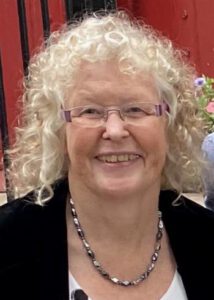Lecturer: Maggi Savin-Baden
Fields: Digital Afterlife/AI
Content
The famous song by Queen, was written by Brian May for the 1986 film Highlander, the song is used to frame the scenes in the film where Connor MacLeod must endure his beloved wife Heather MacLeod growing old and dying while he, as an Immortal, remains forever young. Who wants to live forever as a song and as a religious and philosophical question introduces uncomfortable queries about the value and purpose of this life.
The evening talk suggests that Digital afterlife has moved beyond digital memorialisation towards a desire to preserve oneself after death. Preserving oneself or being preserved by someone else may affect both the dying person’s peace of mind and the well-being of the bereaved. Yet it is not clear whether the possibility of digital immortality and the use of digital media alters thoughts about the mind-body connection, and whether interaction with a digital immortal alters one’s spiritual journey through grief. Afterlife and resurrection remain troublesome because they are couched in mystery and philosophical and theological discourse cannot explain resurrection of the body, because the human body itself is not reducible to simple description or ready comprehension.
Literature
- Burden, D. (2020). Building a Digital Immortal. In M. Savin-Baden & V. Mason-Robbie (Eds)., Digital Afterlife. Death Matters in a Digital Age. Boca Raton, Florida: CRC Press
- Burden, D. & Savin-Baden, M (2019). Virtual Humans: Today and Tomorrow. Florida: CRC Press.
- Harbinja, E. (2020). The ‘new(ish)’ property, informational bodies and postmortality. In M. Savin-Baden & V. Mason-Robbie (Eds)., Digital Afterlife. Death Matters in a Digital Age. Boca Raton, Florida: CRC Press.
- Kasket, E. (2021). If death is the spectacle , big teach is the lens: How social media frame an age of ‘spectacular death’ In M. H. Jacobsen. (Ed) The Age of Spectacular Death. Oxford: Routledge
- Pitsillides, P. (2019). Digital legacy: Designing with things, Death Studies, 43 (7), 426-434. DOI: 10.1080/07481187.2018.1541939
- Savin-Baden, M. (2023) Postdigital Theologies in P. Jandrić (Ed) Encyclopedia of Postdigital Science and Education. Cham: Springer.
- Savin-Baden, M. (2023) Postdigital Afterlife in P. Jandrić (Ed) Encyclopedia of Postdigital Science and Education. Cham: Springer.
- Savin-Baden, M. (2023) Digital afterlife and the spiritual realm: Transcendence. In M. E. Mogseth & F.H. Nilsen. Limits of Life. Critical Interventions, London: Berghahn Series
Lecturer

Professor Maggi Savin-Baden is a Senior Research Fellow at the University of Oxford, UK and has researched and evaluated staff and student experience of learning for over 20 years and gained funding in this area (Leverhulme Trust, JISC, Higher Education Academy, MoD). She gained her Masters and PhD from the University of London and a second Masters in Digital learning from the University of Edinburgh in 2018. Maggi has a strong publication record of over 60 research publications and 25 books which reflect her research interests in the impact of innovative learning, digital fluency, cyber-influence, pedagogical agents, qualitative research methods, and problem-based learning. In her spare time, she runs, bakes, rock climbs, does triathlons and has recently taken up wild swimming and paddle boarding .







